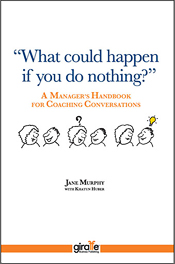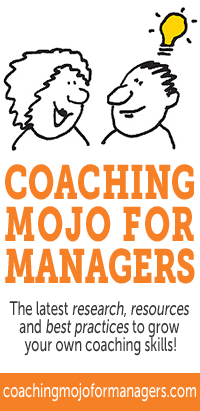Coaching New Leaders Part 4: Of hammers, nails, and fatal flaws
 Jerry Murphy is guest blogger of a series of six posts focused on coaching new leaders. The series will run consecutively. Read about Jerry below.
Jerry Murphy is guest blogger of a series of six posts focused on coaching new leaders. The series will run consecutively. Read about Jerry below.
One of a manager’s most challenging and rewarding situations is coaching someone who is becoming a manager herself—either a first-time manager or taking on a new leadership position.
In this series of posts, I identify opportunities for you to use a coaching orientation to help you facilitate this transition for any of your people. This will help you to frame powerful questions, calibrating your “listening radar” for common issues, and offer appropriate suggestions for their consideration.
You may already have a sense of the strengths and weaknesses of the new manager you are coaching. But does she? One of your high-value contributions in coaching and developing this new manager could be to help her clearly distinguish her relevant strengths and weakness, and how to deal with each.
What are her strengths?
The new manager comes to her role with impressive achievements as an individual contributor and project leader. So success must be a strength of hers…right? Wrong. Ask her about her previous successes and what she did to achieve them. Did she identify a problem? Did she lay out the possible options and devise a creative and effective solution? Did she organize her teammates to implement the solution? In short, what are her real strengths—what does she do best that she can reliably do again to achieve a successful outcome?
Which strengths matter most now?
The old expression goes something like, “To a hammer, every situation looks like a nail.” We tend to see the world in terms of what we prefer to do, and what we do well. If the new manager is great at analyzing data, then she may approach every situation as a data analysis problem. But in her new role as a leader, she’d be better off involving her team in the analysis and in generating ideas for a response.
Rather than defaulting to a strength that served her well as an individual contributor, she should develop her strength at marshaling the team’s resources to tackle the problem. In her new role, she isn’t likely to have the time to do the analysis herself, and so should develop her leadership skills, which will have much higher value now and in the future.
“Fixing” weaknesses
Much has been written about focusing on strengths rather than weaknesses (Drucker, Buckingham, et. al.). This isn’t to suggest that, for example, a manager shouldn’t become more literate in finance. But she doesn’t have to become a CPA to have a working knowledge of finance and how her team contributes to the bottom line. Since there isn’t time to “learn everything” in a managerial role, we should coach people in improving their strengths, since they have likely been success factors up until now. No one is perfect, so people’s weaker points should take a lower priority.
However, there is an exception to this “rule.” If a manager has weaknesses in areas that are essential to the role—collaborating, delegating, treating people respectfully, making decisions—then these need to be addressed ASAP. Such weaknesses are considered “fatal flaws,” since they will block a manager’s progress (or even her career) unless they are corrected.
Identifying her strengths (through coaching, feedback, psychometric instruments, etc.) and building on them, should be the manager’s priority. She should not waste time going from bad to mediocre in an area that isn’t relevant to her role. Knowing her strengths and weaknesses will guide her in selecting teammates with complimentary skills and building a diverse team. As her coach, you can help her reach important insights that will be invaluable to her as a leader.
If you found this post helpful, check out “About the Book” on this blog, and order yourself a copy of “What could happen if you do nothing?” A manager’s handbook for coaching conversations.
 Jerry Murphy is president of Giraffe LLC, a New York-based consulting practice, and Giraffe Business Publishing, a multimedia publishing venture. He serves an international client group of business leaders, teams, and organizations in improving their performance through coaching, leadership development programs, and organizational learning and development.
Jerry Murphy is president of Giraffe LLC, a New York-based consulting practice, and Giraffe Business Publishing, a multimedia publishing venture. He serves an international client group of business leaders, teams, and organizations in improving their performance through coaching, leadership development programs, and organizational learning and development.








